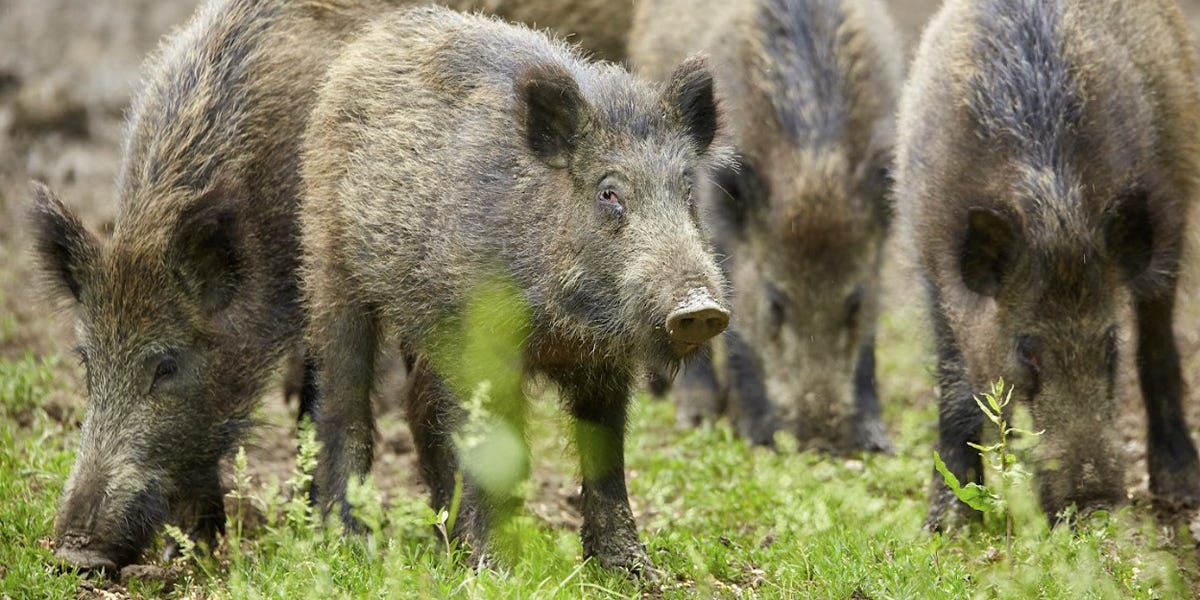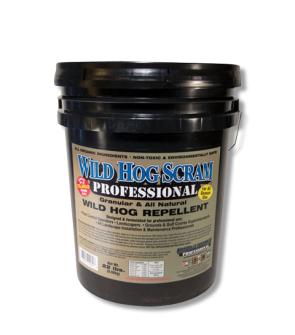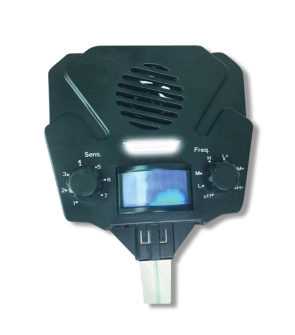Feral Hog Control
Most Effective Products
Feral Hog Control: How To Get Rid of Feral Hogs
This page is a general Feral/Wild Hog control guide. Using the products and methods suggested you will get control of Wild Hogs. Follow this guide and use the recommended products and we guarantee 100% control of Feral Hogs. Consult your local and state guidelines to see if the Feral Hog is a protected species in your location before applying control and proceed with extreme caution when applying Control as the Wild Hogs can be extremely dangerous.
Feral hogs are an invasive species that has become a major problem in recent years, costing the entire country a significant amount in damages ($1.5 billion dollars a year to be exact). If these destructive invaders venture upon your home, it’s pretty safe to expect that your turf or field will be uprooted and whatever plant life or crops you have around will be devoured if the right measures are not taken to control them.
Feral Hogs are wild animals that need food, shelter, and water. Often times this means crossing over to farms, crops, and fields. They can trample and uproot crops, springs, and creeks, and many times this means going over homes and business that are in close proximity to humans, livestock, or watering facilities.
Despite being known as “wild” hogs, feral hogs are deceptively intelligent, being able to adapt to nearly any type of climate or condition. Feral hogs are also prolific in their breeding, which has caused their population to skyrocket to large numbers. Along with the destruction they bring to any land they wander on, they also come with a high potential of disease.
Wild hogs have become so devastating to whatever land they embark upon and their populations have exploded to such unmanageable proportions that different states have allowed landowners to try to eliminate these hogs in whatever way they wish.
If you are encountering Feral Hogs on your property and want them gone, this guide can help. Follow our expert-made DIY Feral Hog treatment guide to know just what to do to get rid of wild hogs permanently.
Identification

Before you can treat you need to make sure you're dealing with Feral or Wild Hogs and not some other creature. Misidentification can lead to using the wrong treatment approach, resulting in a waste of time and money. Thankfully Feral Hogs are easy to identify. Below you can the common characteristics that set them apart.
- Feral hogs are an invasive species and can range in size from 36 inches in size and weight about 100 to 400 pounds in weight, sometimes even bigger.
- They have four tusks that don't stop growing, and their color could vary from hog to hog but is usually dark brown to black.
- Their bodies are covered with grizzly hairs and they have tails.
- Young Feral Hogs are reddish to black in color.
Use the image and description above to properly identify Feral Hogs on your property. If you are not entirely sure, contact us and we will assist you with proper identification.
Inspection

Once you have confirmed that you are dealing with Feral Hogs, you can then move on to inspection. During this phase, you will focus on finding these areas where Feral Hogs are found. This will help you to determine which areas you need to treat for removal.
Where To Inspect
Inspect around your property especially around areas close to water sources such as rivers and creeks. Wild hogs enjoy rolling around muddy areas of your property. Also inspect close to crops, fields, and near livestock. Especially close to trees that produce nuts or fruits.
What To Look For
You're looking for signs of Feral Hog activity. This means looking for their droppings (or scat), signs of rolling around on the mud (or wallowing), the trails they make, and signs of their rubbing on trees that combined with the mud, leaves behind hairs and mud stuck to trees and posts, and finally plowing or rooting of crops or vegetables, these holes will usually be extremely deep often times more than 2 feet. Once you have confirmed Feral Hog activity, it is time to begin treatment.
Treatment
Once you have confirmed Feral Hog activity, it is time to begin treatment. Remember to read all product labels and follow the application instructions on these labels, and stay safe by wearing personal protective equipment (PPE).
Step 1 - Outdoor Treatment with Wild Hog Scram

Begin treatment outdoors. You will use one product, Wild Hog Scram. This product is a non-toxic environmentally safe product that you can use around your property to repel and drive Wild Hogs away from your property. This product can be used in homes, commercial buildings, and farms.
To use this product you will need a rotary spreader. Apply at the rate of one pound per 600 square feet. Apply in the areas where you have noticed Wild Hog activity or where you have found signs of Feral Hog activity. Extend the coverage by about 30 feet around or beyond the damaged area. For gardens, fields, or crops, use the scoop provided with this product to cover the entire area.
Step 2 - Trap Wild Hogs with a Live Trap

For persistent Feral Hogs, trapping them may be the best option. For this we recommend using a large Solutions Humane Live Trap. Bait the trap with some food that the Hog may enjoy and set it up in a common area where they have been active.
Set up the trigger and then monitor the trap for the next couple of days. Before long, the Feral Hog will be captured and you can dispose of them to animal control.
Prevention

After you have treated the area or have removed the Feral Hogs, you will want to make sure they don't make a return to your property. Here are some preventative measures to take.
- Start by building fences around your crops, vegetables, and gardens. The fences should be built of metal mesh wiring (often called Swine or Hog Panels) and should be taller than 34 inches (taller can also be good).
- Reapply Hog Scram as a preventative to repel Hogs from the area.
- Keep your yard clear of litter and debris that may attract Wild Hogs.
Key Takeaways
What are Feral or Wild Hogs?
- Wild hogs are an invasive species that ranks among the most destructive pests in the United States, costing the entire country about $1.5 Billion dollars with a large portion of that burden being billed to Texas as they cost the state alone up to $400 million dollars a year in damage.
- Wild hogs have spread to as much as 39 states where they have become infamous with tearing up recreational areas, golf courses and state parks.
How To Get Rid of Wild Hogs
- To get rid of wild hogs from your property, we recommend repelling with with Hog Scram or trapping them with the Solutions Humane Live Trap.
Preventing Wild Hog Reinvasion
- Prevent wild hog invasions by keeping your property clear of potential food sources, building protective fencing and preventative applications of Hog Scram.













































































































































































































































































































































































































































































































































